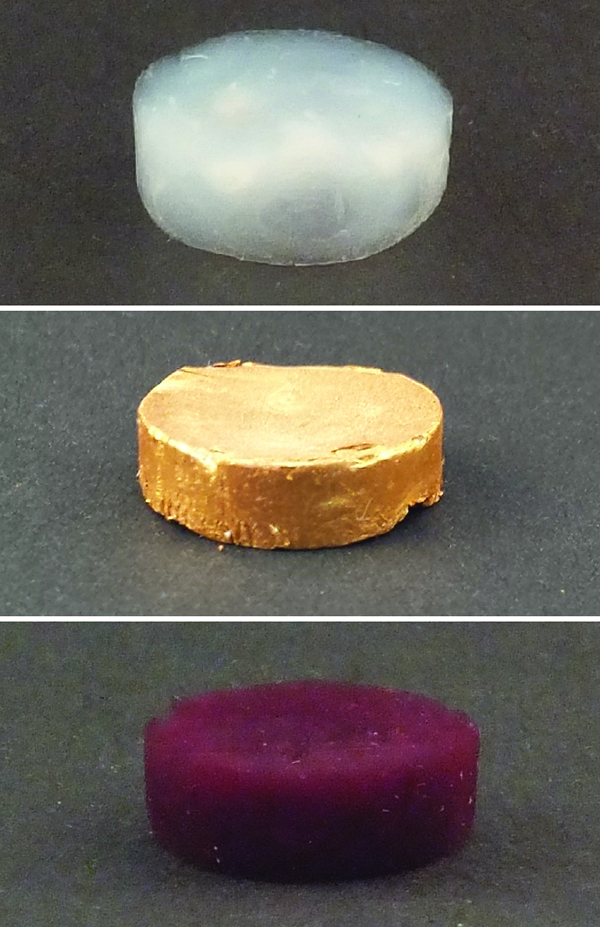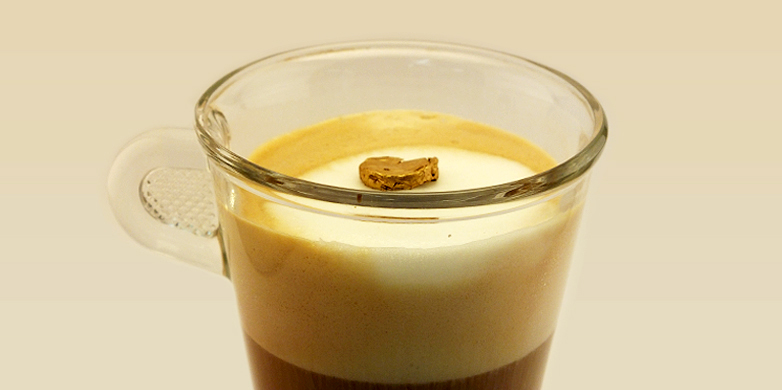A new form of real gold, almost as light as air
Researchers at ETH Zurich have created a new type of foam made of real gold. It is the lightest form ever produced of the precious metal: a thousand times lighter than its conventional form and yet it is nearly impossible to tell the difference with the naked eye. There are many possible applications.
A nugget of real 20 carats gold, so light that it does not sink in a cappuccino, floating instead on the milk foam – what sounds unbelievable has actually been accomplished by researchers from ETH Zurich. Scientists led by Raffaele Mezzenga, Professor of Food and Soft Materials, have produced a new kind of foam out of gold, a three-dimensional mesh of gold that consists mostly of pores. It is the lightest gold nugget ever created. "The so-called aerogel is a thousand times lighter than conventional gold alloys. It is lighter than water and almost as light as air," says Mezzenga.
The new gold form can hardly be differentiated from conventional gold with the naked eye – the aerogel even has a metallic shine. But in contrast to its conventional form, it is soft and malleable by hand. It consists of 98 parts air and only two parts of solid material. Of this solid material, more than four-fifths are gold and less than one-fifth is milk protein fibrils. This corresponds to around 20 carat gold.
Drying process a challenge
The scientists created the porous material by first heating milk proteins to produce nanometre-fine protein fibres, so-called amyloid fibrils, which they then placed in a solution of gold salt. The protein fibres interlaced themselves into a basic structure along which the gold simultaneously crystallised into small particles. This resulted in a gel-like gold fibre network.
"One of the big challenges was how to dry this fine network without destroying it," explains Gustav Nyström, postdoc in Mezzenga's group and first author of the corresponding study in the journal Advanced Materials. As air drying could damage the fine gold structure, the scientists opted for a gentle and laborious drying process using carbon dioxide. They did so in an interdisciplinary effort assisted by researchers in the group of Marco Mazzotti, Professor of Process Engineering.
Dark-red gold

The method chosen, in which the gold particles are crystallised directly during manufacture of the aerogel protein structure (and not, for example, added to an existing scaffold) is new. The method's biggest advantage is that it makes it easy to obtain a homogeneous gold aerogel, perfectly mimicking gold alloys.
The manufacturing technique also offers scientists numerous possibilities to deliberately influence the properties of gold in a simple manner. " The optical properties of gold depend strongly on the size and shape of the gold particles," says Nyström. "Therefore we can even change the colour of the material. When we change the reaction conditions in order that the gold doesn't crystallise into microparticles but rather smaller nanoparticles, it results in a dark-red gold." By this means, the scientists can influence not only the colour, but also other optical properties such as absorption and reflection.
The new material could be used in many of the applications where gold is currently being used, says Mezzenga. The substance's properties, including its lighter weight, smaller material requirement and porous structure, have their advantages. Applications in watches and jewellery are only one possibility. Another application demonstrated by the scientists is chemical catalysis: since the highly porous material has a huge surface, chemical reactions that depend on the presence of gold can be run in a very efficient manner. The material could also be used in applications where light is absorbed or reflected. Finally, the scientists have also shown how it becomes possible to manufacture pressure sensors with it. "At normal atmospheric pressure the individual gold particles in the material do not touch, and the gold aerogel does not conduct electricity," explains Mezzenga. "But when the pressure is increased, the material gets compressed and the particles begin to touch, making the material conductive."
Reference
Nyström G, Fernández-Ronco MP, Bolisetty S, Mazzotti M, Mezzenga R: Amyloid Templated Gold Aerogels. Advanced Materials, 23 November 2015, doi: external page10.1002/adma.201503465call_made


